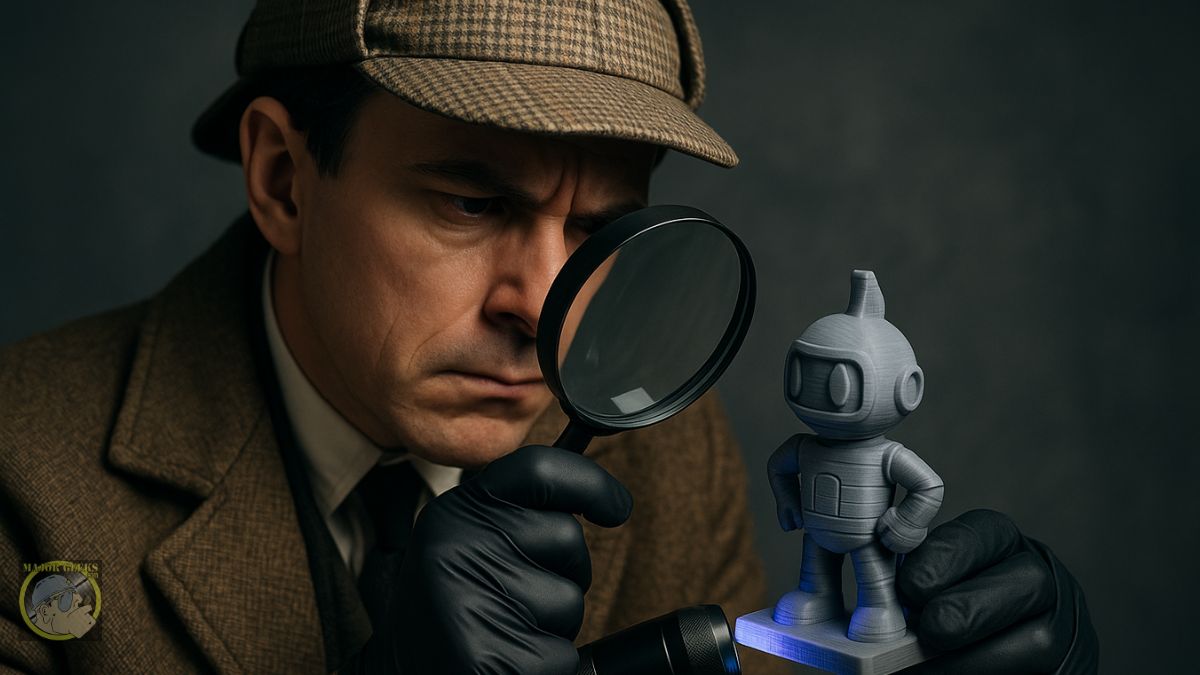How Every 3D Print You Make Might Be Fingerprinted
By Corporal Punishmenton 06/11/2025 |
 TL;DR: A team at the University of Illinois has built an AI tool that can identify exactly which 3D printer made a part—based on just a tiny surface sample. It's like CSI meets Cura. We already knew color laser printers embed hidden dots on your documents, but now even that baby Groot print on your shelf might have a digital return address you didn't know about.
TL;DR: A team at the University of Illinois has built an AI tool that can identify exactly which 3D printer made a part—based on just a tiny surface sample. It's like CSI meets Cura. We already knew color laser printers embed hidden dots on your documents, but now even that baby Groot print on your shelf might have a digital return address you didn't know about.Your 3D Printer Has Been Leaving Clues This Whole Time
Let's get this out of the way: color laser printers have been narc-ing for years. They embed microscopic yellow dots—barely visible to the human eye—that include the date, time, and printer serial number. These were originally intended to track down counterfeiters, but they've raised plenty of privacy concerns along the way.
Now, 3D printers are entering the same arena... but with no built-in dots. Instead, they leave behind naturally occurring "fingerprints" in the plastic itself.
Researchers at UIUC trained a neural network to identify these printer-specific imperfections. Think of it like ballistic fingerprinting, but for a PLA keychain.
They created a dataset of over 9,000 parts from 21 different printers, including FDM (Fused Deposition Modeling) and SLA (Stereolithography), all printed with identical materials and settings. The AI could tell them apart with 98% accuracy using just a 1mm² photo of the part's surface.
In other words: that seemingly smooth plastic surface? It's not. It's full of subtle irregularities—vibrations, nozzle jitter, extrusion flow, slight belt wear—all forming a unique, traceable pattern.
To put that into perspective, 1mm² is approximately the size of a grain of sand, or you could fit 645 of those scans on the face of a dime. That's simply insane.
Cool Applications, Creepy Possibilities
This is undeniably cool tech. Here's what it could be used for:
Quality Control & Process Validation
Imagine a factory needing to verify that a specific part was printed on a certified machine. No more guessing. Just snap a pic, and the AI can say: "Yup, that came from Printer #4 in Room 17."
Counterfeit & IP Protection
3D printing is everywhere, and in fields like aerospace, automotive, and healthcare, counterfeit or unauthorized 3D-printed parts could be hazardous. Using this tech can identify the source and prove a part came from a rogue printer or unauthorized facility.
Or, if you sell your 3D designs on places like Cults3D or Printables with licensing restrictions, Normally, once the STL leaves your hands, it's nearly impossible to trace once one of the bulk 3D printing shops on Etsy gets it in their digital hands. But with this new fingerprinting tech, you could analyze a physical knockoff and potentially identify the exact printer it was made on. That's a game-changer for IP enforcement, adding real teeth to DMCA takedowns or legal action.
Law Enforcement
Take it one step further. 3D-printed firearm components are becoming more frequent and better quality. You could potentially match it back to the printer that made it with no label or marking, proving where, when, and potentially who made the part.
3D Printing Just Got the Laser Printer Treatment
This concept isn't brand new—it just upgraded mediums. For years, laser and inkjet printers have had traceable quirks:
What's new is that we now have the tools and AI horsepower to apply similar traceability to objects, not just documents.
Can You Hide Your Prints? Sort of…
If you're feeling spied on by your 3D printer, here are a few countermeasures:
Post-Processing
Sanding, vapor-smoothing, acetone baths (for ABS), or painting may obscure surface-level markers. That said, deep fingerprinting might still survive under coatings.
Varying Print Parameters
Changing speed, temperature, and layer height between prints can help reduce repeatable patterns. Randomized slicer settings? Even better.
Use Multiple Printers
If you've got access to several machines, alternate between them. The more variables, the harder it is to match your parts to any one source.
Go Stealth or Go Analog
Just like burner phones, you could use a public or third-party printer for "off the record" jobs. Or carve it out of wood. Ain't nobody tracking your whittling.
Final Thoughts from the Nerd Bunker
This isn't fear-mongering. It's just a reminder that our tech, even the fun stuff, isn't as anonymous as we think. Whether it's laser printers adding invisible barcodes, your cellphone creeping on your convos, or 3D printers leaving micro-surface DNA, the machines we love have a funny way of tattling.
So next time you're about to print a spicy part, remember: the plastic remembers.
comments powered by Disqus





